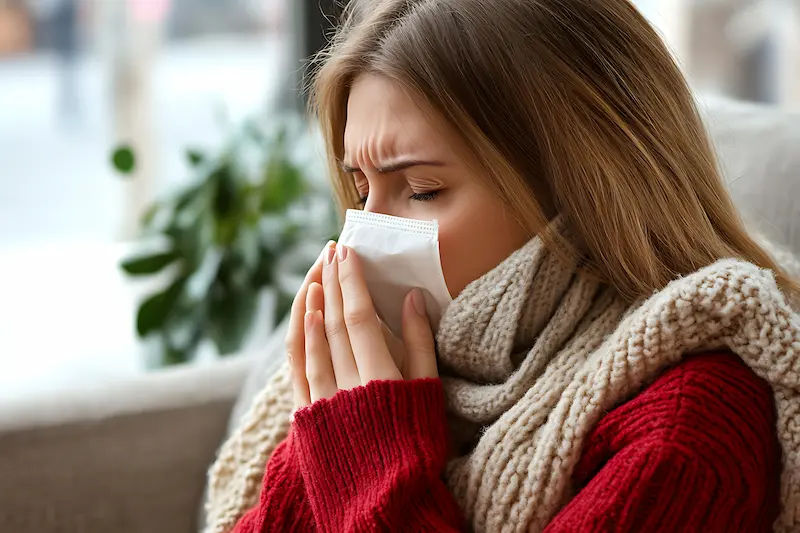Hookah Smoking Risks
Hookah smoking poses serious health risks, including lung damage, heart disease, and cancer. The toxic chemicals and carbon monoxide in hookah smoke increase the risk of respiratory infections and nicotine addiction, making it as harmful as cigarette smoking.

Written by Dr.Sonia Bhatt
Last updated on 3rd Jul, 2025
Introduction
Hookah smoking has been a popular cultural and social activity for centuries, especially in middle eastern and south asian communities. However, in recent years, its popularity has grown globally, with many people believing it to be a safer alternative to cigarette smoking. Despite its social appeal, hookah smoking carries significant health risks that are often overlooked. This article explores the dangers associated with hookah smoking, debunking common misconceptions and highlighting its impact on health.
Ingredients in Hookah Smoke
The ingredients of hookah smoke are as follows:
1. Tobacco and Nicotine Content
Hookah tobacco, often referred to as "shisha," contains nicotine, the addictive chemical found in cigarettes.
A typical hookah session can result in greater nicotine exposure than smoking a cigarette, leading to addiction.
Even nicotine-free shisha still produces harmful toxins when burned.
2. Presence of Harmful Chemicals
Hookah smoke contains many toxic substances, including tar, carbon monoxide, arsenic, lead, and other heavy metals.
The charcoal used to heat the tobacco releases additional harmful chemicals, making hookah smoke even more dangerous.
3. Flavors and Additives
Flavoured tobacco makes hookah smoking more appealing, especially to young users, masking the harshness of tobacco smoke.
Artificial sweeteners and chemical additives in shisha further contribute to respiratory and cardiovascular risks.
Many flavouring agents are known to produce carcinogenic compounds when burned.
Health Risks Associated with Hookah Smoking
The health risks associated with hookah smoking are as follows:
1. Respiratory System Effects
Respiratory system effects includes:
Hookah smoke contains harmful toxins such as nicotine, tar, and heavy metals, similar to cigarette smoke.
The charcoal used to heat the tobacco produces high levels of carbon monoxide, which can impair lung function.
The water in a hookah does not filter out toxins, meaning the smoke still contains high levels of harmful chemicals.
Hookah smoking may lead to greater exposure to toxic substances than cigarette smoking, increasing the risk of respiratory diseases.
A single hookah session can expose users to significantly more smoke than a cigarette, potentially leading to lung damage.
Sweeteners and flavourings in hookah tobacco may further increase exposure to harmful smoke-related toxins.
2. Cardiovascular System Risks
The cardiovascular system risks includes:
The high levels of carbon monoxide in hookah smoke reduce oxygen levels in the blood, increasing the risk of heart disease.
Long-term hookah smoking raises blood pressure and increases the likelihood of heart attacks and strokes.
Nicotine in shisha contributes to arterial stiffness, reducing overall cardiovascular health.
Passive hookah smoke exposure also increases the risk of cardiovascular problems for non-smokers.
3. Cancer Risks
The cancer risks includes:
Hookah smoke contains carcinogenic chemicals that increase the risk of various cancers, including lung, bladder, and oral cancers.
Prolonged exposure to heavy metals and tar significantly raises the likelihood of developing cancerous growths.
Research suggests that hookah smokers absorb higher levels of cancer-causing substances than cigarette smokers due to deeper inhalation and longer smoking durations.
Comparison with Cigarette Smoking
Compared to cigarette smoking, alternative smoking methods have gained popularity, but their health risks and impacts remain a topic of debate.
1. Differences in Inhalation and Exposure
Differences in inhalation and exposure includes:
A typical hookah session can last up to an hour, during which a smoker can inhale the equivalent of 100 or more cigarettes worth of smoke.
Hookah smokers tend to inhale more deeply than cigarette smokers, increasing lung exposure to toxins.
Due to the communal nature of hookah smoking, multiple individuals may be exposed to the same toxic smoke.
2. Misconceptions about Safety
Misconceptions about smoking hookah includes:
Many people believe that hookah is less harmful than cigarettes due to its water filtration, but this is a myth.
Hookah smoke contains just as many harmful chemicals as cigarettes, if not more.
The social aspect of hookah smoking makes it seem less dangerous, leading to increased consumption and long-term addiction.
Impact on Oral Health
1. Dental and Gum Health Concerns
The dental and gum health concerns includes:
Hookah smoking is linked to an increased risk of gum disease, tooth decay, and bad breath.
The high sugar content in flavoured shisha contributes to bacterial growth, leading to oral infections.
Smoking weakens the immune system, making it harder for the body to fight off gum infections and periodontal disease.
2. Risk of Oral Cancer
The risk of oral cancer due to hookah includes:
Hookah smokers face a higher risk of developing oral cancers due to prolonged exposure to carcinogenic substances.
The heat from the smoke can damage the delicate tissues in the mouth, increasing cancer risk over time.
Second-hand Smoke Exposure
Exposure to second-hand smoke poses serious health risks, affecting both smokers and non-smokers alike, especially in enclosed spaces.
1. Health Effects on Non-Smokers
The health effects of hookah smoke on non-smokers are as follows:
Non-smokers exposed to hookah smoke inhale harmful chemicals, increasing their risk of respiratory and cardiovascular diseases.
Indoor hookah smoking exposes bystanders to high levels of carbon monoxide and other toxic compounds.
2. Risks to Children and Pregnant Women
The risk of secondhand hookah smoke on children and pregnant woman includes:
Pregnant women exposed to hookah smoke risk complications such as low birth weight, stillbirth, and developmental issues in babies.
Children in hookah-smoking environments are at higher risk of asthma, lung infections, and long-term respiratory problems.
Social and Psychological Effects
Smoking not only impacts physical health but also has significant social and psychological effects, influencing behaviour, relationships, and mental well-being.
1. Social Factors and Peer Pressure
The social factors includes:
Hookah smoking is often a social activity, leading individuals to partake due to peer influence.
The communal aspect can create a false sense of safety, encouraging more frequent use.
2. Psychological Dependence
The psychological dependence factors includes:
The combination of nicotine addiction and social reinforcement makes quitting hookah smoking challenging.
Many users do not realise they are addicted, as hookah smoking is often viewed as an occasional or recreational habit.
Population Groups at Greater Risk
Certain population groups are at greater risk of the harmful effects of smoking, including children, pregnant women, and individuals with pre-existing health conditions.
1. Youth and Adolescents
The youth and adolescents are affected in the following ways:
Young individuals are more likely to try hookah due to its appealing flavours and social acceptance.
Early exposure increases the risk of long-term nicotine addiction and smoking-related diseases.
2. Seasonal and Habitual Users
The seasonal and habitual users are affected in the following ways:
People who engage in hookah smoking occasionally may still face significant health risks due to prolonged exposure during each session.
Regular users are at an even higher risk of severe health complications.
Prevention and Cessation
Effective prevention and cessation strategies are essential in reducing smoking rates, promoting healthier lifestyles, and minimising the risk of tobacco-related diseases.
1. Public Health Initiatives
Public health initiatives includes:
Governments and health organisations are raising awareness about the dangers of hookah smoking through educational campaigns.
Regulations on flavoured tobacco and hookah lounges help reduce accessibility, especially for younger individuals.
2. Strategies and Programs for Quitting
Strategies and programs for quitting includes:
Smoking cessation programs offer support and resources for individuals trying to quit hookah smoking.
Behavioural therapy, nicotine replacement therapies, and peer support groups can help break the habit.
Raising awareness about the risks can encourage people to make informed decisions about their health.
Conclusion
Hookah smoking is often misunderstood as a safer alternative to cigarette smoking, but the evidence clearly indicates otherwise. From respiratory and cardiovascular risks to the potential for cancer and oral health issues, the dangers of hookah smoking are significant. The social appeal and misconceptions surrounding its safety make it particularly dangerous, especially for young and occasional users. Public awareness, preventive measures, and quitting support programs are crucial in addressing this growing public health concern. Making informed choices and understanding the long-term consequences of hookah smoking can help individuals protect their health and well-being.
Consult Top Pulmonologists
Consult Top Pulmonologists

Dr Rakesh Bilagi
Pulmonology Respiratory Medicine Specialist
10 Years • MBBS MD PULMONOLOGIST
Bengaluru
Apollo Clinic, JP nagar, Bengaluru
Dr. Naseeha Mohammed S V
Pulmonology Respiratory Medicine Specialist
6 Years • MBBS, MD ,DNB Respiratory Medicine
Bengaluru
Apollo Clinic, Sarjapur Road, Bengaluru

Dr. Sumara Maqbool
Pulmonology Respiratory Medicine Specialist
12 Years • MBBS, DNB Respiratory, critical care and sleep medicine, DrNB superspeciality Critical care, IDCCM, IFCCM, EDIC
Delhi
Apollo Hospitals Indraprastha, Delhi
(25+ Patients)

Dr Vishwa Vijeth K.
Pulmonology Respiratory Medicine Specialist
8 Years • MBBS, MD ( Respiratory Medicine)
Bangalore
Apollo Clinic Bellandur, Bangalore

Dr Chetan Kumar
Pulmonology Respiratory Medicine Specialist
27 Years • MBBS, MD TB & CHEST DISEASE
Delhi
Cronus Hospital, Delhi

